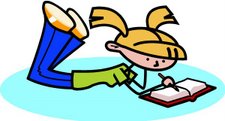Today is National ADHD Awareness Day!
 Who has ADHD? Little Man and I do!!!! The inability to control your impulses and wandering mind is a very difficult thing to live with. For years, I compensated by being "busy!" People with hyperactivity have the hardest time with sitting still. Going beyond just the physical, hyperactivity is also linked to brain activity. It can be very hard to sit through a class after a concept has been understood. While other students need more time, ADHD students tend to get classroom concepts quickly and are ready for the next step; making classroom learning a nightmare for ADHD students. ADHDer's will become physically agitated if not being mentally stimulated. Perhaps this is why untreated kids do better in higher learning institutions!
Who has ADHD? Little Man and I do!!!! The inability to control your impulses and wandering mind is a very difficult thing to live with. For years, I compensated by being "busy!" People with hyperactivity have the hardest time with sitting still. Going beyond just the physical, hyperactivity is also linked to brain activity. It can be very hard to sit through a class after a concept has been understood. While other students need more time, ADHD students tend to get classroom concepts quickly and are ready for the next step; making classroom learning a nightmare for ADHD students. ADHDer's will become physically agitated if not being mentally stimulated. Perhaps this is why untreated kids do better in higher learning institutions!
Ok, now for the more scientific stuff...
Attention Deficit Hyperactivity Disorder (ADHD) is a condition that becomes apparent in some children in the preschool and early school years. It is hard for these children to control their behavior and/or pay attention. It is estimated that between 3 and 5 percent of children have ADHD, or approximately 2 million children in the United States. This means that in a classroom of 25 to 30 children, it is likely that at least one will have ADHD.
ADHD was first described by Dr. Heinrich Hoffman in 1845. A physician who wrote books on medicine and psychiatry, Dr. Hoffman was also a poet who became interested in writing for children when he couldn't find suitable materials to read to his 3-year-old son. The result was a book of poems, complete with illustrations, about children and their characteristics. "The Story of Fidgety Philip" was an accurate description of a little boy who had attention deficit hyperactivity disorder. Yet it was not until 1902 that Sir George F. Still published a series of lectures to the Royal College of Physicians in England in which he described a group of impulsive children with significant behavioral problems, caused by a genetic dysfunction and not by poor child rearing—children who today would be easily recognized as having ADHD.1 Since then, several thousand scientific papers on the disorder have been published, providing information on its nature, course, causes, impairments, and treatments.
A child with ADHD faces a difficult but not insurmountable task ahead. In order to achieve his or her full potential, he or she should receive help, guidance, and understanding from parents, guidance counselors, and the public education system. This document offers information on ADHD and its management, including research on medications and behavioral interventions, as well as helpful resources on educational options.
Some signs of hyperactivity-impulsivity are:
· Feeling restless, often fidgeting with hands or feet, or squirming while seated
· Running, climbing, or leaving a seat in situations where sitting or quiet behavior is expected
· Blurting out answers before hearing the whole question
· Having difficulty waiting in line or taking turns.
info courtesy of NIMH!
To hear a podcast with Ty Bennington, click on my pix!








2 comments:
:o)
i'm all of those things and more!!!
Post a Comment